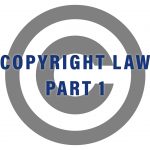As we’ve continued to analyze the history and application of copyright law in the United States and how it relates to Amazon sellers, we must stop to discuss what is perhaps the most relevant piece of legislature when it comes to copyright on Amazon: the DMCA.

The DMCA stands for Digital Millennium Copyright Act.
President Bill Clinton signed the DMCA into law on October 28, 1998. The law has a large impact on the Amazon landscape and was the first major foray into copyright law on the online marketplace.
History
Prior to the DMCA, the last major copyright law was signed ten years earlier with the Berne Convention in 1988. The World Wide Web was created just two years later, and copyright law needed to evolve with the shifting tides. Bill Clinton recognized this issue, and in 1992 he formed the Information Infrastructure Task Force to tackle copyright issues in the age of the Internet.
In 1993, the group went to work as led by U.S. Commissioner of Patents and Trademarks Bruce Lehman, who was known for his work in the computer-programming field. The group wanted to ensure that copyright holders held as much power on the online marketplace as they did offline. At the time, the government couldn’t have possibly known that the World Wide Web was about to evolve into the greatest technological advancement in human history. Their inclination to jump on this early proved to be fruitful.
Eventually the Administrative Working Group on Intellectual Property Rights concluded its research into how to improve the online copyright world, and proposed a series of changes. With the help of the World Intellectual Property Organization, the DMCA was born and signed into law in 1998.
What is the DMCA?
The DMCA made a number of changes to the online landscape. For starters, it made it illegal for people to use nefarious methods to obtain copyrighted material without paying for it on the open market. Think Limewire or Napster, which are file sharing systems that allow users to illegally share MP3 files, essentially giving away free music that people would otherwise have to pay for. To this day, service providers have trouble preventing users from gaining access to music illegally, which is doing a lot of damage to the music industry. In just a little bit, we’ll get to how service providers can shield themselves from legal liability when this happens.
Another new addition to copyright law was the idea that service providers were not responsible for users breaking copyright laws on their websites, so long as the providers were diligent in punishing users that it knew were breaking the law. Amazon is one such service provider, and this is why Amazon suspends the accounts of Amazon sellers who infringe on copyright laws or intellectual property.
These methods are known as “take down” procedures that all service providers can use. YouTube, Facebook, Instagram, Twitter, and Google are various service providers that allow users to have personal profiles that can be taken down if laws are broken. According to CJ Rosenbaum, founder and CEO of Rosenbaum Famularo, P.C., the law firm behind Amazon Sellers’ Lawyer, service providers are defined as “an entity offering the transmission, routing, or providing of connections for digital online communications.”
Whether you’re a seller on Amazon, eBay, Walmart, or all of the above, you’re selling online thanks to a service provider. And those providers have measures in place to make sure they’re satisfying the laws of the DMCA in order to ensure that their company isn’t on the hook if you break a copyright law on Amazon (or any other laws) using their website.
Online Copyright Infringement Liability Limitation Act
That’s a mouthful, huh? The DMCA is split up into five separate titles, and this is the name of Title II, which is of utmost importance to Amazon sellers. We’ll just call it OCILLA for short. OCILLA creates four “safe harbors” which protect Amazon and other service providers from legal liability. The four are as follows:
· “transitory digital network communications,”
· “system caching,”
· “information residing on systems of networks at the direction of users,” and;
· “information location tools.”
The reason Amazon is protected from these four safe harbors is because the company cannot completely control what its users do with the profiles they create. Amazon simply has to monitor what its users do and act when they see something that is out of line, but a user personally breaking the law through one of these four safe harbors will not get Amazon into any legal trouble, as long as they follow the rules.
In granting Amazon and other service providers with these protections, those service providers are also agreeing to do their part in keeping all of the bad guys off of their platform. All service providers must create a system through which they can remove users who repeatedly infringe on their laws (like Amazon seller account suspensions or Facebook/Twitter removing users’ accounts from their platforms). The providers also need to respect and accommodate the four safeguards to make sure copyright remains protected.
Now, let’s briefly discuss each of the four safe harbors to gain a better understanding of what they’re each saying about Amazon’s legal liability in the case of a copyright infringement.
Safe Harbors
You can think of a “transitory digital network communication” as a private message that you might send on Facebook. If you and a friend are communicating through the Facebook messenger function, that’s a private personal channel of communication that is used through the service provider of Facebook. In order to be protected through the safe harbor, all messages have to be initiated completely person-to-person with no involvement or prompting of the service provider itself. In this example, Facebook isn’t telling you to message your friend, but rather providing you the methods through which to communicate. Because Facebook does not initiate nor does it select the material that you are communicating about, nor does it choose to send your private message to other people on the platform without your consent, Facebook is protected through this safe harbor.
“System caching” is a way for online service providers to save information that was provided to them by a user for later use without having to request the information again. This allows Amazon to save content without subjecting itself to liability. A cache can help explain why your online web browser knows what websites you visit frequently; a service provider can store your cache information to help improve processing rates in the future, as long as the service provider does not change the content without your consent. But if a cache stored by Amazon contains a link to an infringing product, Amazon isn’t liable for damages thanks to this safe harbor. The service provider must also remove any material that is posted without the authorization of the copyright owner once the service provider is aware of the existence of such material. You’ll see a theme here going forward.
“Information residing on systems or networks at the direction of users” is one that should be familiar to Amazon sellers. It’s the idea that the service provider is not responsible if you are selling legally infringing material on your Amazon seller account. Of course, Amazon must satisfy a few requirements to be protected by this safe harbor, including suspending any account that it knows to be hosting any copyrighted material. This, of course, affects Amazon sellers daily and it’s the very reason why Amazon will take down any account that it has even the slightest suspicion is hosting infringing material. Better be safe than sorry, in Amazon’s eyes.
“Information location tools” protects online service providers if a hyperlink or online directory on their platform sends a user to a page with infringing material without the knowledge of the service provider. This protects Amazon from having a link on a “customers who viewed this item also viewed” directing you to a product that violates intellectual property laws. Similarly to the previous safe harbor, the service provider must take down the infringing page or link as soon as it has knowledge of its existence.
Conclusion
The DMCA has a whole load of legal material that’s relevant to Amazon sellers and explains why Amazon operates the way that it does with regards to seller suspensions. In order to protect itself from legal liability, Amazon errs on the side of caution often by suspending sellers’ accounts from the platform even if they didn’t actually violate any laws or possess infringing material.
In the event that your account is wrongfully removed from the platform, you’ll need an effective Plan Of Action to secure access to your account once again. We’ll get to those a little bit later, and next we’ll talk more about the DMCA and the impact that it has had on the online marketplace.
 Anders is a content creator for Rosenbaum Famularo, P.C., law firm behind AmazonSellersLawyer.com.
Anders is a content creator for Rosenbaum Famularo, P.C., law firm behind AmazonSellersLawyer.com.
Anders will be earning his degree in journalism from Hofstra and has five years of professional journalism experience. He has written for numerous online and print publications including SB Nation and The Hofstra Chronicle.